Seongamje [Korea Quality] / 성암재 [한국관광 품질인증]
0m 180 2020-09-02
19-18, Seodong-gil, Bonghwa-gun, Gyeongsangbuk-do
+82-54-673-5011
Located in Chunyang-myeon, Bonghwa-gun, Gyeongsangbuk-do, Seongamjae is a traditional hanok built with pine trees (Geumgangsong) in 1915. It was owned by Seongam Gang Seungwon, the third son of Uijae Gang Pil of distinguished service to independence. Seongamjae is the place where Mr. Uijae Gang Pil delivered fund to the Provisional Government of Korea in Shanghai, which was then used by the 3rd division of army during the Korean War. Now, the grandson of Mr. Seongam Gang Seungwon and his wife are keeping the place and named it Seongamjae after his grandfather. They run it as a hanok open to the public in order to help spread history and culture. The owner couple has committed themselves to keeping the house and gardening. Nevertheless, the traditional hanok is equipped with modern facilities so that people of all age groups, Koreans and foreigners alike, may have a relaxed time here. Bordering Seongamjae is the National Folk Cultural Asset No. 279 Bonghwa Mansan Gotaek, home to the family of the owner of Seongamjae, and open to everyone who stays in Seongamjae. Cooking is limited in the hanok but there are restaurants nearby. Korean style Yeonbab is provided at 15,000 won per person when breakfast is booked in advance. As Chunyang Station of Yeongdong Line is a 5-minute walk away, the accommodation is conveniently located for train travelers. Note that luggage storage service is provided after check-in while visitors are enjoying walking, trekking, or travelling by train.
V-Train (백두대간협곡열차(V-트레인))
12.9 Km 15530 2020-10-21
Buncheon-gil 49, Socheon-myeon, Bonghwa-gun, Gyeongsangbuk-do
+82-1544-7788
El tren cuya primera letra viene de la palabra valley (valle), recorre Cheoram de Gangwon-do, y Buncheon y Yangwon de Gyeongsangbuk-do, entre otras ciudades. Tomar este tren es una experiencia muy refrescante, ya que se pueden abrir las ventanillas para sentir la brisa. Viaja a una placentera velocidad de 30 km por hora, por lo que los pasajeros pueden apreciar con detenimiento los paisajes montañosos y los valles.
El tren opera diariamente, excepto lunes y martes, entre las estaciones de Buncheon y Cheoram, y tiene 3 vagones capaces de llevar hasta 158 personas. El V-Train ofrece también la oportunidad de bajar para explorar algunas regiones y tomar fotografías, ya que hace paradas de entre 5 y 10 minutos en la Estación de Yangwon y la Estación de Seungbu.
Recorrido (paradas): Buncheon – Bidong – Yangwon – Seungbu- Cheoram
Bosque Recreativo Nacional del Monte Cheongoksan (국립 청옥산자연휴양림)
13.2 Km 49519 2021-02-17
Cheongok-ro 1552-163, Seokpo-myeon, Bonghwa-gun, Gyeongsangbuk-do
El Bosque Recreativo Nacional del Monte Cheongoksan está situado en Bonghwa-gun, Gyeongsangbuk-do, y cuenta con muchos árboles centenarios. En el monte Cheongoksan (1.276 m de altura) de la cordillera Taebaek Sanmaek, se encuentran árboles entre las majestuosas formaciones rocosas. Si se pasea por el camino de senderismo, se llega a un puente y, tras cruzarlo, se entra a una parte del bosque que ha mantenido su espíritu natural. En primavera, preciosas flores florecen en el bosque, sobre todo magnolias. También tenemos en su interior un parque acuático, un parque infantil, un centro deportivo y una zona de acampada, entre otras instalaciones.
Festival del Songi de Bonghwa (봉화송이축제)
16.4 Km 18192 2024-02-28
Naeseong-ri, Bonghwa-eup, Bonghwa-gun, Gyeongsangbuk-do.
054-674-3053
Las setas songi (setas del pino) de Bonghwa están consideradas una especialidad de primer orden. Estas setas crecen solo en los pinos llamados chunyangmok, y pueden ser almacenadas durante largos períodos de tiempo. Durante el Festival del Songi de Bonghwa, los visitantes pueden ver estas setas en su hábitat natural e incluso tener la oportunidad de recolectarlas. También se pueden probar varios licores y especialidades locales elaborados a partir de las deliciosas setas songi.
Festival del Pez de Agua Dulce de Bonghwa (봉화은어축제)
16.7 Km 2826 2024-02-28
Naeseong-ri, Bonghwa-eup, Bonghwa-gun, Gyeongsangbuk-do
054-674-3053
El Festival del Pez de Agua Dulce de Bonghwa, que se celebra en el municipio de Bonghwa-gun, en la provincia de Gyeongsangbuk-do, ofrece numerosos programas interactivos que incluyen la pesca de pez dulce, carreras bajo agua y concursos de preguntas. La pesca del pez dulce, que tiene lugar dos veces al día en días laborables y tres veces los sábados, es la actividad más famosa del festival. Los ganadores de las carreras bajo agua y de los concursos de preguntas reciben especialidades locales como premio. Además, hay varios eventos educativos y culturales, tales como una exhibición de diversas especies de peces, un centro ecológico sobre el pez dulce en el que los visitantes pueden observar el hábitat natural del pez, el Museo de Moneda Coreana, el Centro Turístico Fotográfico de Bonghwa, pinturas sobre el pez dulce, cerámica, artesanías de hanji (papel tradicinal coreano), e inscripción en piedras.
Templo Cheongnyangsa (청량사)
16.8 Km 11141 2023-02-22
Cheongnyangsan-gil 199-152, Myeongho-myeon, Bonghwa-gun, Gyeongsangbuk-do.
El templo Cheongnyangsa, situado en el Parque Provincial del Monte Cheongnyangsan, fue construido en el año 663 durante el reinado del rey Munmu de Silla. Según la teoría del pungsu (feng shui, en chino), el templo está en un sitio inmejorable, ya que está rodeado por 12 picos de montaña, que simbolizan los pétalos de loto, convirtiendo el templo en el estambre de la flor. Hay dos tesoros en el templo: la sala Yuribojeon, que tiene una placa escrita por el rey Gongmin; y la estatua de Buda Jibul, elaborada con papel. Aunque la estatua Jibul está hecha con papel, actualmente está bañada en oro. Justo detrás del templo está el pico Bosalbong. Otros patrimonios culturales son sala Eungjinjeon, la pagoda de sari de 5 niveles, la cueva Gimsaenggul y el pabellón Cheongnyangjeongsa.
Parque Provincial del Monte Cheongnyangsan (청량산도립공원)
16.9 Km 1744 2022-07-26
Gwangseok-gil 39, Myeongho-myeon, Bonghwa-gun, Gyeongsangbuk-do.
+82-54-679-6651
El Parque Provincial del Monte Cheongnyangsan es, desde tiempos remotos, el lugar donde han residido muchos sacerdotes y escritores famosos. Aquí se encuentra el acantilado Giam que forma 12 picos y el río Nakdonggang fluye entre las montañas.
En esta montaña se haya el templo Cheongyangsa, que fue construido por Wonhyo Daesa (617-686) durante el 3er. año del reinado de Munmu en el período de Silla (a.C 57 - 935 d.C). También hay varios templos, las cascadas Gwanchang y muchos otros sitio turísticos.
Tras el canto rodado del parque provincial, hay un monumento donde se talla un poema del famoso erudito Toegye I Hwang (1501 a 1570), del período de Joseon, llamado Cheongyangsanga. Se dice que cuando Toegye estaba planeando construir Donsanseodang, una escuela para la enseñanza del confuncianismo, no le fue fácil decidir si construirlo en el monte Cheongyangsan o en la academia neoconfuciana Dosan Seowon, donde finalmente fue construido. La decisión fue tomada en el último momento. Aparte de Toegye I Hwang, los monjes budistas Won-Hyo y Ui-Sang (625-702), el maestro de la caligrafía Gim-Saeng (711-791), el erudito Chi-Won Choi (857-¿?) y muchos otros personajes famosos de la historia de Corea visitaron esta montaña para cultivar sus artes; por lo que se dice que la presencia de estos estudiosos aun están vivas en leyendas que se cuentan hasta hoy en día.
Se dice que Osandang fue construido por los discípulos de Toegye en el lugar donde él y los eruditos realizaban estudios y discusiones, y es aquí donde se encontraron varias reliquias, como el castillo Cheongnyangsan, que se cree que fue construido po el rey Gongmin (que reinó entre 1351 y 1374) del período de Goryeo, para escapar de las rebeliones de los campesinos.
Manhoegotaek [Korea Quality] / 만회고택 [한국관광 품질인증]
18.3 Km 3568 2020-09-08
51, Baraemi 1-gil, Bonghwa-eup, Bonghwa-gun, Gyeongsangbuk-do
+82-54-673-7939, +82-10-7424-7280
Manhoe Historic House is located in the village of Baraemi, whose name means “a village under the sea.” As a place where literary and intellectual endeavors have flourished since ancient times, Manhoe Historic House’s representative structure is Myeongwolu Pavilion, where ancestors studied and recited poetry amid the beautiful landscape of Sobaeksan Mountain. It is said that about 1,000 poems were composed at the pavilion in the old days.
The house is also the birthplace of the independence movement in Korea. Local Confucian scholars led by Independence activist Kim Chang-suk gathered together at the pavilion right after the March 1st Movement in 1919 and wrote the petition for Korea’s Independence, which was eventually submitted to the Paris Peace Conference. Recently, many hundreds of letters exchanged between independence activists were also discovered at the house.
The house is a square-shaped hanok structure consisting of a ‘ㄷ’-shaped anchae (women’s quarters), a ‘ㅡ’-shaped sarangchae (men’s quarters), a jungmunganchae (middle gate building), and a courtyard. The anchae, which is over 320 years old, has been inhabited by the descendants of Kim Geon-su, a civil official of the late Joseon period, for six generations, The sarangchae, which is over 200 years old, was added to the original house at a later date.
The house was mainly built with red and solid Chunyang pine wood, and is well preserved as a result. The sarangchae has a half-hipped roof, and comprises a sarangbang (main room), daecheong (main floored room), geonneonbang (a room opposite the main room), and toenmaru (a narrow wooden porch running along the outside of the building). The guestrooms of the sarangchae and jungmunganchae include the Sarangbang, Seonangsil, and Baraemisil Rooms, of which the Sarangbang and Seonangsil are equipped with an individual indoor bathroom.
In particular, the anchae is a cozy well-insulated building comprising a daecheong in the middle, a sangbang room on the left, and a gobang (storeroom) and anbang (main room) on the right.
Every room of the anchae is decorated with paintings by the owner’s daughter, fabric artworks, and antique wooden furniture. The anbang, which has an attic and indoor bathroom, can accommodate up to eight people. Guests of the sangbang and gobang need to use the external bathroom.
Right next to the house is a farm covering an area of 6,600m2 where over 100 kinds of crops are cultivated organically, including wildflowers, sweet potatoes, tomatoes, corns, peanuts, salad leaves and other vegetables, which are available for guests. Although the house doesn’t provide a breakfast, guests can pick vegetables in the field and cook them in the communal kitchen or at the BBQ facility in the outer yard. Meanwhile, the nearby Songyigukbapjip restaurant specializes in the delicious local dish made with pine mushrooms.
The house provides a variety of traditional experience activities including Tuho (stick throwing), Seunggyeongdo (chess), Neolttwigi (Korean jumping game similar to see-saw), Sijo composition (traditional Korean three-verse poem), a traditional musical instrument experience (six-stringed Korean zither, seven-stringed instrument, gong, etc.), and a woodblock printing experience.
Tohyang traditional house [Korea Quality] / 토향고택 [한국관광 품질인증]
18.3 Km 10790 2020-09-10
43, Baraemi 1-gil Bonghwa-eup, Bonghwa-gun, Gyeongsangbuk-do
+82-10-8575-9036
This historic house has been the home of the descendants of Kim Yeo-byeong, one of the tenth-generation ancestors of its current occupants. Kim Yeo-byeong was born as the fourth son of Kim Seong-gu (courtesy name: Oheon, 1641-1707), founder of Uiseong Kim's Clan at Baraemi Village in Bonghwa and who was a great-great-great grandson of eminent Neo-Confucian official-scholar Kim U-goeng (courtesy name: Gaeam, 1524-1590). The house is comparatively large, featuring a square layout with a lofty five-bay gate building (soseuldaemun) and the main house of seven bays. The main building (anchae) of the house, located against the backdrop of a pine hill, is believed to have been built over 400 years ago before the founder of the family arrived at the village. The family guesthouse (sarangchae) was renovated in 1876 by Kim In-sik (courtesy name: Amun, 1855-1910), who served as the caretaker (Chambong) of Sunghyejeon Shrine, and Grand Master Tonghun before founding Joyang School, which would later become the present-day Bonghwa Elementary School. The name of the house, Tohyang, came from the courtesy name of Kim Jung-uk (1924-1967), a grandson of Kim In-sik. The latter was conscripted by the colonial authority ruling Korea at the time to serve the Japanese puppet state Manchukuo but fled during a military drill to become a freedom activist fighting against Imperial Japan in the Chinese cities of Suzhou and Hangzhou. He returned home after the 1945 Korean Liberation and studied in Jungang High School and Korea University before serving as a budget officer at the Economic Planning Board. The name of the house inscribed on the plaque hung under the roof of the gatehouse was written by his son Kim Jong-gu in honor of his life and achievements. At the front courtyard of the house is a lotus pond including barbecuing equipment and pottery kiln. In the rear garden is a folk playground with facilities and equipment for swinging, traditional Korean seesaw, shuttlecock-kicking, pitch-pot, and top spinning. The front courtyard also features rustic ceramic pots and rooftiles bearing poetic passages written by the mistress of the house who is a prize-winning poetess. The house provides visitors with an opportunity to experience traditional Korean cultural heritage such as pottery, calligraphy, poetry, and traditional musical instruments. Rich with the heritage of traditional Korean culture and lifestyle, the Historic House of Tohyang guides visitors to refreshment and healing obtained from the legacy of the peaceful rural life of days gone by.
The Namho house [Korea Quality] / 남호구택 [한국관광 품질인증]
18.6 Km 117 2020-09-03
21, Baraemi-gil, Bonghwa-gun, Gyeongsangbuk-do
+82-54-673-2257
Located in Bonghwa-eup, Bonghwa-gun, Gyeongsangbuk-do, Bonghwa Namho Gutaek is an old house from the Chosun period designated as Cultural Property Material No. 385. It was built by Nongsan Kim Nam Yeong in 1876 and his son Namho Kim Roe Sik had lived there. Mr. Kim Roe Sik was awarded with a medal for contributing his entire asset to military fund for the Provisional Government of Korea. The spirit of putting others and his country before himself continues until now. Having been built with high-quality materials, the 140-year old Namho Gutaek has barely suffered any deformation. In addition, attentive care added by the descendants has kept the traditional beauty of the hanok intact. One may even feel reverence at the Sosel Daemun (gate). In harmony with the hanok, the garden in the yard and the flower bed sitting next to the wall change color as season changes. It is a great place to feel the scent of old trees and get some rest. In 2016, the shared toilet was renovated in modern style to alleviate any inconvenience for the guests. In the spacious yard, there’s a spot for traditional games such as Tuho, Jegichagi, Neoltuigi, etc. Bonghwa Station (Yeongdong Line) is about a 15- minute walk away; an inner city bus stop in the town, on the other hand, makes a trip to other regions easy.
![Seongamje [Korea Quality] / 성암재 [한국관광 품질인증]](http://tong.visitkorea.or.kr/cms/resource/47/2626147_image2_1.jpg)
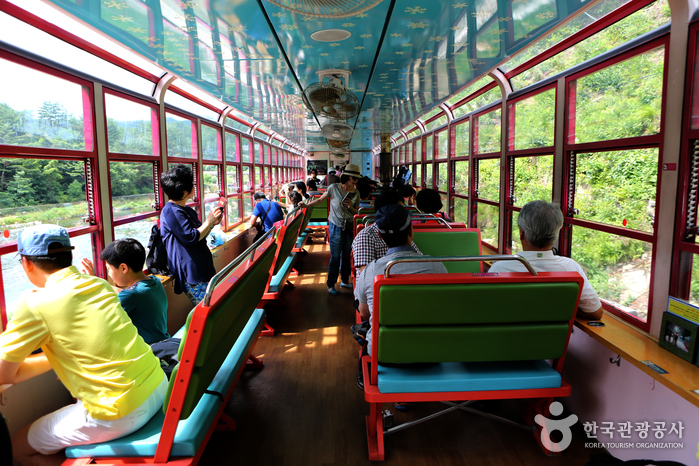
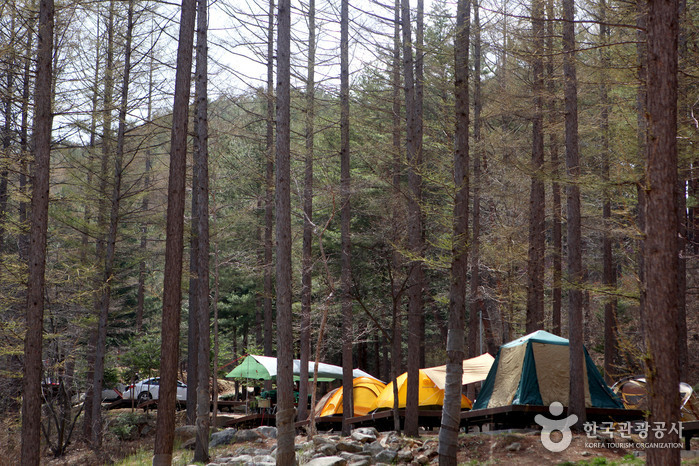
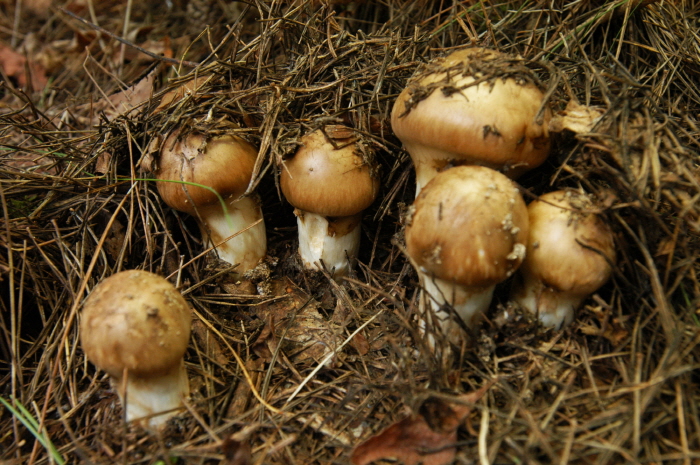
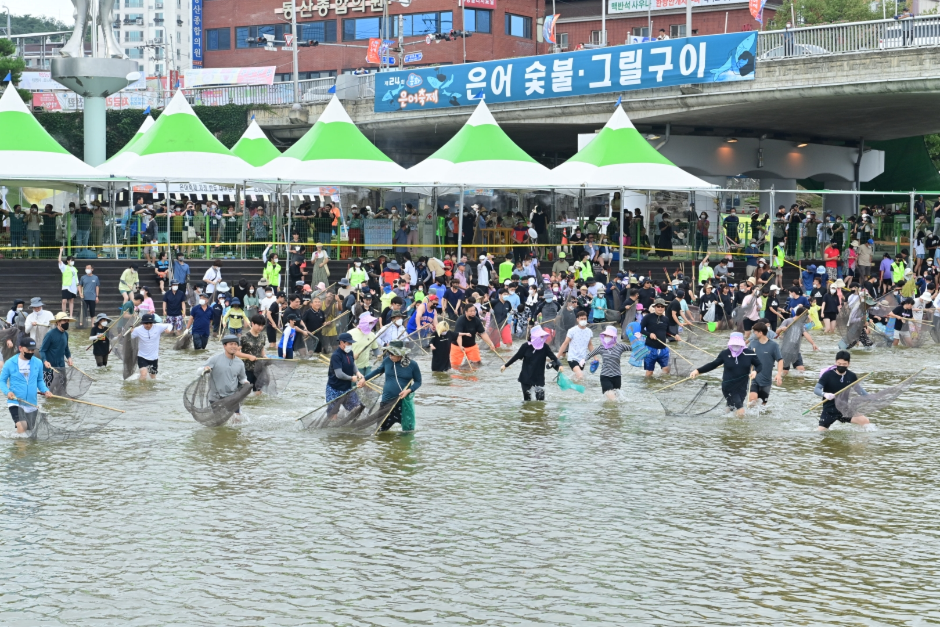
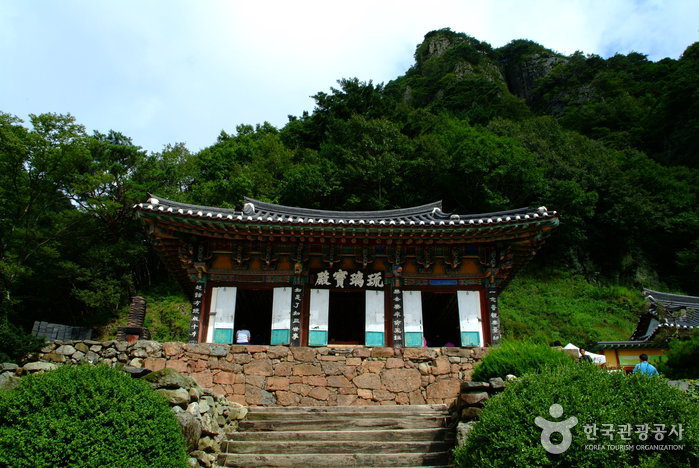
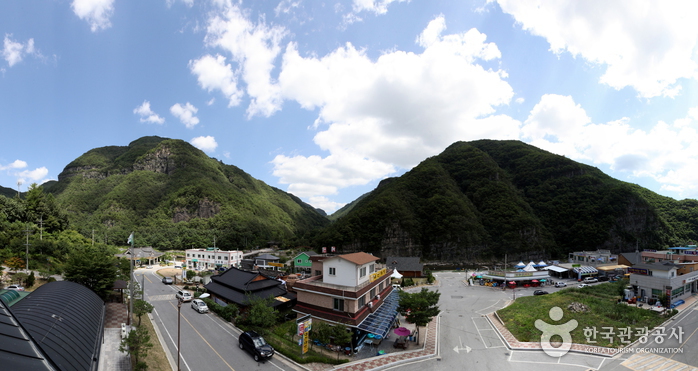
![Manhoegotaek [Korea Quality] / 만회고택 [한국관광 품질인증]](http://tong.visitkorea.or.kr/cms/resource/64/2579364_image2_1.jpg)
![Tohyang traditional house [Korea Quality] / 토향고택 [한국관광 품질인증]](http://tong.visitkorea.or.kr/cms/resource/57/2627457_image2_1.jpg)
![The Namho house [Korea Quality] / 남호구택 [한국관광 품질인증]](http://tong.visitkorea.or.kr/cms/resource/90/2626090_image2_1.jpg)
 Español
Español
 한국어
한국어 English
English 日本語
日本語 中文(简体)
中文(简体) Deutsch
Deutsch Français
Français Русский
Русский